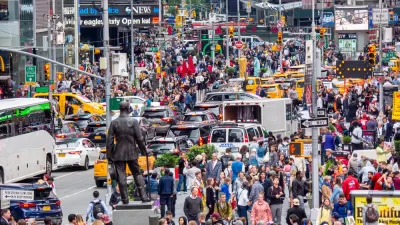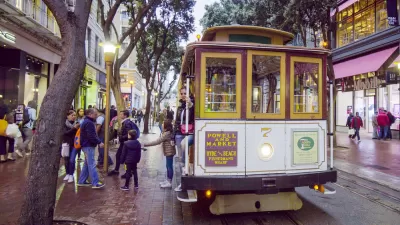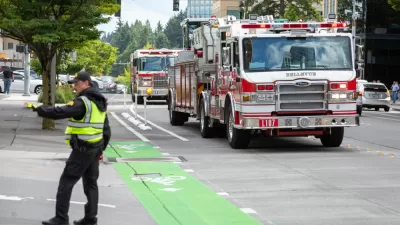The city of Milwaukee's commitment to Complete Streets is still in early stages, as a new progress report details with an eye toward the future.

The Milwaukee Department of Public Works (DPW) has unveiled a benchmark report, the first of its kind in the city, on progress toward goals for Complete Streets set in October 2019, reports Jeramey Jannene.
The city of Milwaukee adopted its Complete Streets policy with the goal to increase road safety for all users, by planning each project with the safety of not just motorists, but also "pedestrians, bicyclists and other road users, regardless of age or ability, in every street project," explains Jannene.
The report tracks the city's progress toward making those planning considerations in 2019.
The report looks at all street reconstruction, repaving or striping projects greater than a quarter-mile in length where a “substantial design change” occurred. DPW notes that 22 projects were completed in 2019. Primarily due to the timing of the policy’s October 2018 adoption and long lead time on many DPW projects, only two projects incorporated Complete Streets improvements. One of the projects was located in an [Neighborhood Revitalization Strategy Areas].
Next year's report will have plenty to talk about, notes Jannene: "A number of projects have already been implemented in 2020 that aren’t included in the report, including narrowing or removing travel lanes, shortening pedestrian crossing distances and implementing an Active Street program."
FULL STORY: How Is City Doing on Complete Streets?

Alabama: Trump Terminates Settlements for Black Communities Harmed By Raw Sewage
Trump deemed the landmark civil rights agreement “illegal DEI and environmental justice policy.”

Planetizen Federal Action Tracker
A weekly monitor of how Trump’s orders and actions are impacting planners and planning in America.

The 120 Year Old Tiny Home Villages That Sheltered San Francisco’s Earthquake Refugees
More than a century ago, San Francisco mobilized to house thousands of residents displaced by the 1906 earthquake. Could their strategy offer a model for the present?

In Both Crashes and Crime, Public Transportation is Far Safer than Driving
Contrary to popular assumptions, public transportation has far lower crash and crime rates than automobile travel. For safer communities, improve and encourage transit travel.

Report: Zoning Reforms Should Complement Nashville’s Ambitious Transit Plan
Without reform, restrictive zoning codes will limit the impact of the city’s planned transit expansion and could exclude some of the residents who depend on transit the most.

Judge Orders Release of Frozen IRA, IIJA Funding
The decision is a victory for environmental groups who charged that freezing funds for critical infrastructure and disaster response programs caused “real and irreparable harm” to communities.
Urban Design for Planners 1: Software Tools
This six-course series explores essential urban design concepts using open source software and equips planners with the tools they need to participate fully in the urban design process.
Planning for Universal Design
Learn the tools for implementing Universal Design in planning regulations.
Clanton & Associates, Inc.
Jessamine County Fiscal Court
Institute for Housing and Urban Development Studies (IHS)
City of Grandview
Harvard GSD Executive Education
Toledo-Lucas County Plan Commissions
Salt Lake City
NYU Wagner Graduate School of Public Service





























